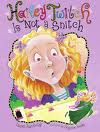 Sixteen-year-old Molly is on the adventure of her life. Sneaking into the U. S. from her family’s farm in Canada, she’s on a mission to find out if her grandparents are still alive and living near Portland, Oregon. Travel is severely restricted in a time when most of the world’s oil has run out, and governments tightly control what’s left. Communication is sporadic, and Molly must adjust to changing and unanticipated circumstances before she makes her way to her grandparents’ doorstep.
Sixteen-year-old Molly is on the adventure of her life. Sneaking into the U. S. from her family’s farm in Canada, she’s on a mission to find out if her grandparents are still alive and living near Portland, Oregon. Travel is severely restricted in a time when most of the world’s oil has run out, and governments tightly control what’s left. Communication is sporadic, and Molly must adjust to changing and unanticipated circumstances before she makes her way to her grandparents’ doorstep.
She finds them alive, but they are eking out an existence with little food and no prospects for the future. Molly must convince them to leave the city and return to Canada with her, even though the journey is sure to be difficult and uncertain, with no way to determine how long it will take. She must also figure out a way to escape the local organized crime mob, which is intent on keeping her around after she overhears them threaten to kill a neighbor. With the help of her new friend, Spill, she just might find a way for all of them to go home.
Restoring Harmony by Joelle Anthony will transport you into life in the 2040s. Anthony paints a vivid picture of this world without ready gasoline. With no strong government to support infrastructure, organized crime controls most routine transactions. Food is hard to come by. Travel and communication is sparse. Health care is limited.
Molly is a great heroine for her time. Raised on a farm, she has learned self-sufficiency, and she’s not afraid to work. Spared of the realities of a tough city life, she still believes in the goodness of people. She plays the fiddle to restore her own inner harmony and to soothe others as well.
Topics to discuss include the book’s portrayal of this future world and book club members’ own perceptions of what the future may bring. You can also talk about family relationships, adapting to uncertain circumstances, being self-sufficient, contributing to a community, discovering a new friendship, and finding a possible love interest. Anthony has a great book trailer as well as recordings of some of the music highlighted in the book on her website, http://joelleanthony.com/. I highly recommend Restoring Harmony for mother-daughter book clubs with girls aged 13 and up.
Note to readers in Portland, Oregon. Anthony is appearing at two area bookstores in the next two days. Thursday, May 20 she’ll be at Annie Bloom’s Books, 7834 Southwest Capitol Highway, beginning at 7:30 p.m. On Saturday, May 22, she’ll be reading and signing books beginning at 1 p.m. at the Border’s store in Gresham, 687 NW 12th Street.
 From her Japanese grandmother, twelve-year-old Ophelia learns the stories of strong women from Japanese and Chinese legends. From her horseback riding teaching, she learns the Celtic myth Rhiannon. The Greek goddess Artemis comes to her in a quiet moment. Through these stories of powerful women making difficult choices to be true to themselves, Ophelia learns to make difficult but empowering moments in her own life.
From her Japanese grandmother, twelve-year-old Ophelia learns the stories of strong women from Japanese and Chinese legends. From her horseback riding teaching, she learns the Celtic myth Rhiannon. The Greek goddess Artemis comes to her in a quiet moment. Through these stories of powerful women making difficult choices to be true to themselves, Ophelia learns to make difficult but empowering moments in her own life.







